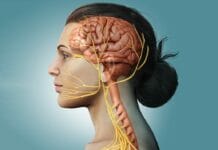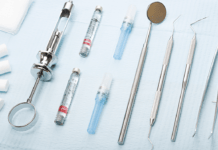Disclosure: We value transparency at Today’s RDH. This quiz is sponsored content from Dentsply Sirona Preventive as part of our sponsored partner program.
An advantage of phosphor plate receptors over solid-state rigid-wired or wireless sensors is they have a greater active area of exposure.
Phosphor plate receptors have greater latitude than traditional film and solid-state rigid-wired or wireless sensors. Latitude refers to the ability to capture a diagnostic image with a range of exposures. Advantages of phosphor plate receptors over solid-state sensors and traditional film are their flexible construction, greater active area of exposure, and lower retake frequency. These advantages help reduce exposure-related retakes.1
Disadvantages of phosphor plate receptors include the risk of creasing or scratching which can result in image artifacts and the need for replacement. Phosphor plates do not create an instant image; plates need to be digitally scanned, then cleared before use. While this does take extra time, it is less time than needed for traditional film development.
1. Wenzel, A., Moystad, A., Work Flow with Digital Intraoral Radiography: A Systematic Review. Acta Odontologica, 2010;68(2):106-114. Retrieved from https://www.ncbi.nlm.nih.gov/pubmed/20141365
Advantages of solid-state digital sensors include which of the following?
Digital radiography, including both phosphor plates and solid-state digital sensors, reduces patient radiation exposure as compared to traditional film. Advantages of solid-state digital sensors include rapid image acquisition and real-time image display.
Disadvantages of solid-state digital sensors include smaller active sensor surface area than that of phosphor plates or traditional film which may require additional images to be taken. Rigid construction and the attached wire can make placement difficult and uncomfortable to a patient. Errors due to rigid construction which may lead to a higher rate of retakes include1:
- Placement errors most often in the premolar or molar area
- Vertical angulation errors particularly in the anterior which result in incisal edge cut-offs
- Horizontal overlapping most often in premolar periapicals and bitewings
- Bitewing placement difficulties due to patient discomfort because of sensor bulkiness and corners
1. Wenzel, A., Moystad, A., Work Flow with Digital Intraoral Radiography: A Systematic Review. Acta Odontologica, 2010;68(2):106-114. Retrieved from https://www.ncbi.nlm.nih.gov/pubmed/20141365
It is sometimes acceptable to hold the sensor or tubehead for a patient during radiograph exposure to ensure a diagnostic image.
Guidelines for operator safety while taking dental radiographs state the clinician must avoid the primary beam. Clinicians should never hold the sensor or tubehead in place for a patient during radiograph exposure. To avoid operator exposure, a clinician must stand at least 6 feet away from the tubehead during radiograph exposure.1
1. Iannucci, J.M., Howerton, L.J. (2017). Dental Radiography Principles and Techniques (5th ed.). St. Louis, MO: Elsevier.
Posterior bitewing radiographs are recommended for an adult recall patient with clinical caries or at increased risk for caries at which time interval?
The American Dental Association Council for Scientific Affairs recommends an adult recall patient with clinical caries or who is at increased risk for caries receive posterior bitewing radiographs at an interval of 6-18 months. The prescribing dentist’s professional judgment should be used to determine the optimum time for radiographic examination within the suggested interval. The range of recommended intervals are derived from the results of research into the rates at which interproximal caries progresses through tooth enamel.1
1. American Dental Association, Council on Scientific Affairs and Human Services, Public Health Service, Food and Drug Administration. Dental Radiographic Examinations: Recommendations for Patient Selection and Limiting Radiation Exposure. Rev. 2012. Retrieved from https://www.ada.org/~/media/ADA/Publications/ADA%20News/Files/Dental_Radiographic_Examinations_2012.pdf?la=en
The most radiosensitive cell (a cell that is sensitive to radiation) is the small lymphocyte. Radioresistant cells (cells that are resistant to radiation) include muscle, nerve, and bone marrow.
A cell’s response to radiation exposure is determined by mitotic activity (cells that undergo many divisions over time or divide frequently are more radiosensitive), cell differentiation (immature cells or cells that aren’t highly specialized are more radiosensitive), and cell metabolism (cells with higher metabolism rates are more radiosensitive).1
Radiosensitive cells include those of bone marrow, reproductive cells, and immature bone cells. The most radiosensitive cell is a small lymphocyte. In turn, radioresistant cells include those of mature bone, muscle, and nerve.1
1. Iannucci, J.M., Howerton, L.J. (2017). Dental Radiography Principles and Techniques (5th ed.). St. Louis, MO: Elsevier.
Radiation dosimeter badges should be worn by those who may receive an annual dose greater than 1 mSv to monitor exposure levels. Pregnant dental clinicians who operate X-ray equipment should wear a dosimeter badge regardless of anticipated radiation exposure levels.
According to the American Dental Association Council for Scientific Affairs, “Although dental professionals receive less exposure to ionizing radiation than do other occupationally exposed health care workers, operator protection measures are essential to minimize exposure. Operator protection measures include education, the implementation of a radiation protection program, occupational radiation exposure limits, recommendations for personal dosimeters and the use of barrier shielding. The maximum permissible annual dose of ionizing radiation for healthcare workers is 50 millisieverts (mSv) and the maximum permissible lifetime dose is 10 mSv multiplied by a person’s age in years. Personal dosimeters should be used by workers who may receive an annual dose greater than 1 mSv to monitor their exposure levels. Pregnant dental personnel operating x-ray equipment should use personal dosimeters, regardless of anticipated exposure levels.”
1. American Dental Association, Council on Scientific Affairs and Human Services, Public Health Service, Food and Drug Administration. Dental Radiographic Examinations: Recommendations for Patient Selection and Limiting Radiation Exposure. Rev. 2012. Retrieved from https://www.ada.org/~/media/ADA/Publications/ADA%20News/Files/Dental_Radiographic_Examinations_2012.pdf?la=en








